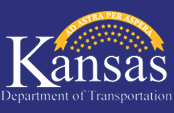FAQs
Are roundabouts, rotaries, and traffic circles all the same?
What determines the size of a roundabout?
Aren't traffic signals safer than roundabouts for pedestrians?
Are roundabouts safe near schools?
Are roundabouts appropriate everywhere?
I'm driving in a multilane roundabout. How do I choose which lane to enter and exit?
What should I do when I'm in a roundabout when an emergency vehicle arrives?
What about snow removal at roundabouts?
Are roundabouts, rotaries, and traffic circles all the same?
No. Rotaries and traffic circles are usually older and less efficient than modern roundabouts. Other than sharing a circular shape, a modern roundabout works much differently than a traffic circle or rotary. A modern roundabout requires entering drivers to yield to traffic already in the roundabout. This keeps the traffic in the roundabout constantly moving and prevents much of the gridlock seen at rotaries. Both rotaries and traffic circles often reverse this and require vehicles in the circle to yield to those entering the circle. Modern roundabouts are also much smaller than rotaries and thus operate at safer, slower speeds. Small traffic circles are sometimes used to calm the speed of traffic in residential areas.
What determines the size of a roundabout?
The size of a roundabout is determined by factors including current and predicted traffic volumes (“capacity”), the size of the largest vehicles, and the need to achieve appropriate speeds through the roundabout. To handle typical trucks with overall wheelbases of 50 ft. or more, a single-lane roundabout needs to be at least 100 ft. in diameter and is typically 120 to 140 ft. in diameter.
Aren't traffic signals safer than roundabouts for pedestrians?
It depends on the volume of pedestrians and vehicles. In many cases, a roundabout can offer a safer environment for pedestrians than a traffic signal because a pedestrian crossing at a roundabout makes two simple crossings of one–way traffic moving at slow speeds. A pedestrian crossing at a traffic signal still needs to contend with vehicles turning right or left on green, vehicles turning right on red, and vehicles running the red light. The latter of these potential conflicts can occur at high speeds and may result in serious injuries or fatalities to pedestrians. On the other hand, some pedestrians (particularly those with visual impairments) may have more difficulty crossing the unsignalized crosswalks at a high-volume, multilane roundabout than at a signalized intersection.
Are roundabouts safe near schools?
Roundabouts have been installed near schools throughout the U.S., including Kansas. Other locations include Montpelier, Vermont; Howard, Wisconsin; University Place, Washington; and Kennewick, Washington. None has reported any significant problems. Prior to the opening of the roundabout at Howard, Wisconsin, the school required all school children to arrive by bicycle or car because it was unsafe to cross the street. Since the roundabout opened, children now have a safe crossing location, aided by a crossing guard.
Are roundabouts appropriate everywhere?
No. The choice of using a roundabout, traffic signal or unsignalized control is a case–by–case decision. The Kansas Department of Transportation evaluates each candidate intersection individually to determine whether a roundabout or a traffic signal, two-way stop, or all-way stop would be most effective.
I'm driving in a multilane roundabout. How do I choose which lane to enter and exit?
In general, approach a multilane roundabout the same way you would approach any other intersection. If you want to turn left, use the left-most lane and signal that you intend to turn left. If you want to turn right, use the right-most lane and signal that you intend to turn right. To go straight through the intersection you can generally use either lane unless signs and/or pavement markings indicate otherwise. In all cases, drive counter-clockwise around the central island. When preparing to exit, turn on your right turn signal as you pass the exit located before the one you want to use.
What should I do when I'm in a roundabout when an emergency vehicle arrives?
If the roadway in the roundabout is wide enough, you may be able to pull as far to the right as possible and allow the emergency vehicle to pass. However, it is generally better to completely clear the intersection and pull off to the side past the splitter island after leaving the roundabout.
What about snow removal at roundabouts?
A number of communities in snowy areas have installed roundabouts, including Howard (Green Bay), Wisconsin; Montpelier, Vermont; and Vail, Colorado. All have indicated that while there is some initial adjustment in procedures for snowplow crews, roundabouts generally present no major problems for snow removal. In Howard, Wisconsin, for example, one truck will start on the truck apron and plow around the roundabout to the outside, while another truck will plow each entry and exit, pushing the snow to the outside. Roundabouts make it easier to turn snowplows as well.
Roundabouts differ from rotaries and traffic circles
Urban roundabout in school area
Lane-use sign helps guide lane-use choice

